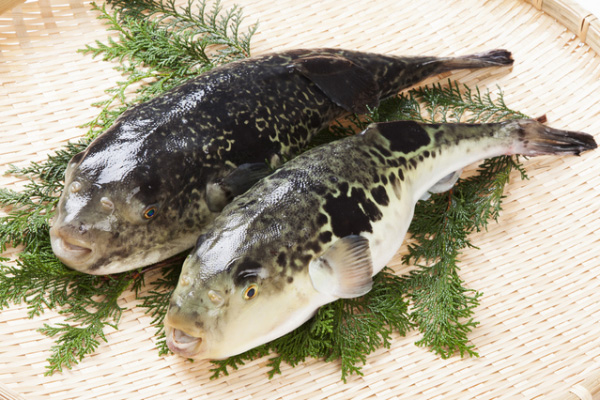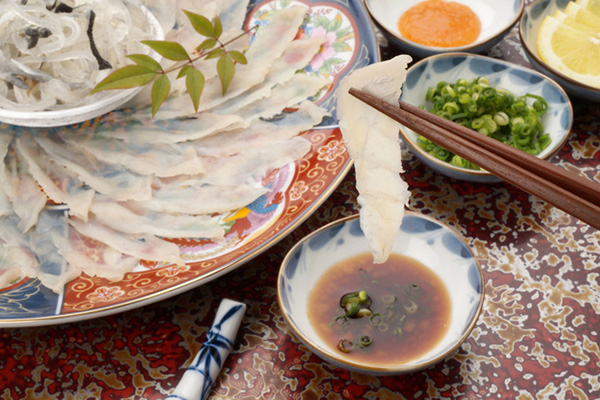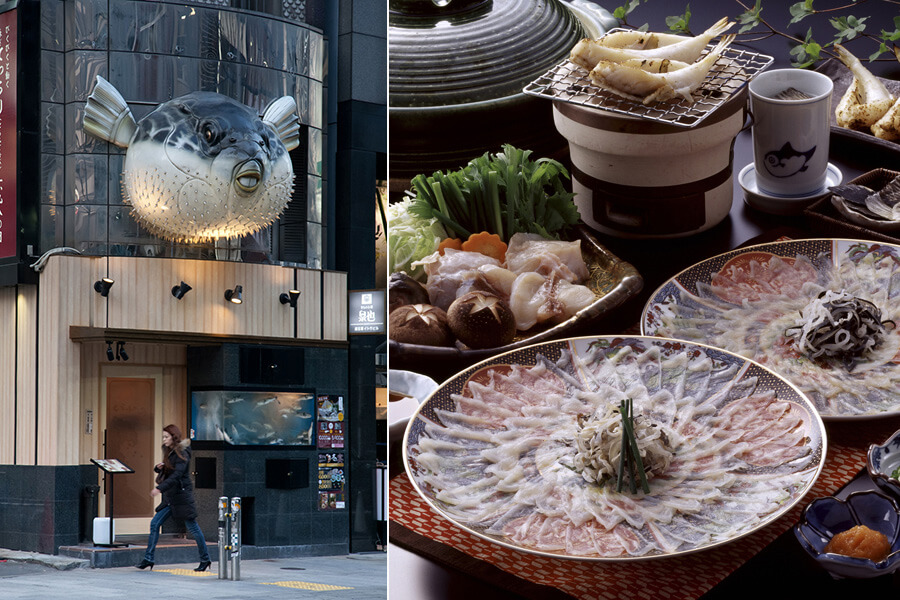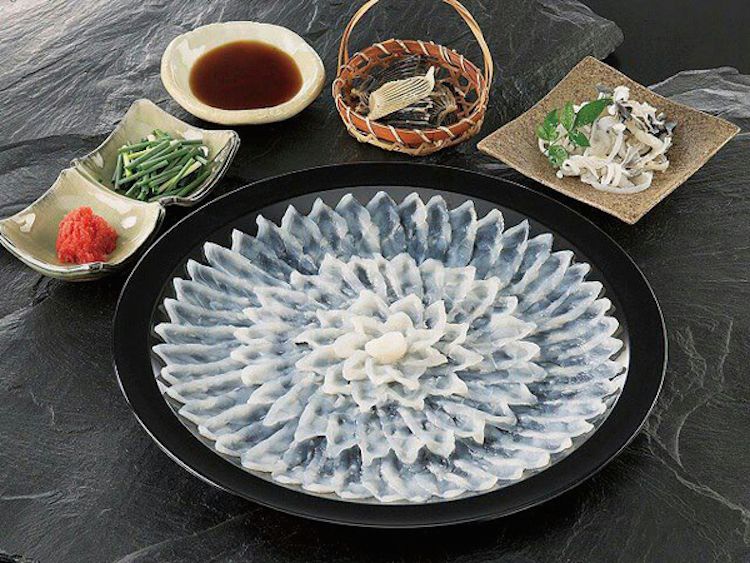Fugu, or pufferfish, are luxury fish that are used as ingredients in food eaten all year round in Japan. These fish are poisonous, and they can only be served at restaurants in Japan where a qualified fugu handler works. Because this system is managed in general by the Japanese government, you can rest assured as you eat fugu.
There are about 350 types of pufferfish around the world and about 35 types of fugu in the seas around Japan. Many types of fugu are highly poisonous. The poison called tetrodotoxin in fugu is said to be 1,000 times stronger than potassium cyanide. Tetrodotoxin poisoning has been described as “rapid and violent”, first a numbness around the mouth, then paralysis, and finally death. The unfortunate diner remains conscious to the end. There is no antidote. The poisonous areas vary depending on the type of fugu, so it is extremely dangerous. For this reason, there are qualified fugu handlers who have the right skills and knowledge.
There are about 22 types of fugu used for food in Japan. Fugu is high in protein and low in calories, and they have many nutrients such as vitamins and minerals, making them a tasty food that is good for beauty and health. Because of that People want to eat it, even if it is poisonous. In Japan, people say that someone “wants to eat fugu but does not want to lose their life” when referring to someone who is hesitating about taking action for something dangerous.

Fugu has been an appealing type of food for Japanese people since ancient times. Fugu is recognized as poisonous fish around the world, but you can eat them safely and with peace of mind in Japan. This is because the Japanese Government manages a system for training fugu handlers. There is a legal obligation that only qualified fugu handlers can serve fugu meals, so you can safely eat dishes with fugu at restaurants in Japan.
Kunio Miura always uses his special knives to prepare fugu – wooden-handled with blades tempered by a swordsmith to a keen edge. Before he starts work in his kitchen they are brought to him by an assistant, carefully stored in a special box. He started as an apprentice in a kitchen at the age of 15. Training lasts at least two years but he was not allowed to take the practice test to get a licence until he was 20, the age people become a legal adults in Japan.
Miura-san, as he is respectfully known, has been cutting up blowfish for 60 years but still approaches the task with caution because a single mistake could mean death for a customer. In Miura-san’s establishment, a meal starts at $120 (£76) ahead, but people are willing to pay for the assurance of the fugu chef licence mounted on his wall, yellowed now with age. He is one of a select guild authorised by Tokyo’s city government to serve the dish.
In the process of preparing fugu, handlers remove the parts with poison in them, and they use a lot of water to wash away the blood from the meat. More parts are disposed of than the edible parts overall, and it takes time and effort to cut up the meat. These are two more reasons why fugu are seen as a luxury type of fish. After the poison is removed, handlers cut the meat into thin slices with a knife, and serve these slices on a plate. This dish is called “Tessa,” or fugu sashimi. This dish looks beautiful as a flower, and you can see the pattern on the plate through the meat. Fugu has a lot of collage and is full of fibre. You can enjoy their delicious taste through the creative preparation methods of fugu handlers.

Once the poisonous parts of the fugu are removed during the preparation process, there is a legal obligation to keep them in a special lockable storage container and burn them or dispose of them in another way that will not result in danger to health. Twenty-three people have died in Japan after eating fugu since 2000, according to government figures. Most of the victims are anglers who rashly try to prepare their catch at home. The Japanese government manages and restricts the handling of fugu, and it imposes severe punishments through regulations on fugu that are based on the Food Sanitation Act.
Sliced fugu is white and has a refreshing, light taste. When served as sashimi, it has a firm texture and a sweet flavour that fills your mouth as you chew it. For relish, you eat it dipped in Ponzu (soy sauce blended with citrus juice) together with seasonings like chopped young green onions, grated daikon radish, and chilli peppers. It can also be served in other ways, such as a hotpot where you can enjoy the soft meat, in a seasoned rice porridge letting you taste the umami flavour in the broth, or deep-fried with a crispy batter outside and juicy meat inside.
You eat the skin as well; it is not thrown away. The skin is gelatinous and is tasty with a firm and crunchy texture. It is boiled briefly and dipped in Ponzu before eating. Fugu soft roe has a thick and creamy flavour. It is eaten grilled or as tempura. One dish made with fugu roe pickled and fermented in rice bran is salty and has a strong umami taste. This dish can only be produced by about 10 businesses that have received a permit from Ishikawa Prefecture. The egg sacs of the fish are pickled for three years to remove the poison before eating. However, the reason why this process removes the poison has not been completely clarified, even in the modern-day.

In Shimonoseki City, Yamaguchi Prefecture, people call fugu by a different name, “Fuku,” based on another word in Japanese, and they treat this fish as a symbol of good luck. The word Fuku in Japanese means “fortune.” Japanese people love fugu. These fish might have poison, but they are delicious and are seen to bring good luck. So, why not try eating Japanese fugu dishes yourself?
Article by: Anjalee Senadeera | Faculty of Science




Leave a Reply